Traffic Flows in CloudGuard Network for Azure VMSS
Inbound Traffic
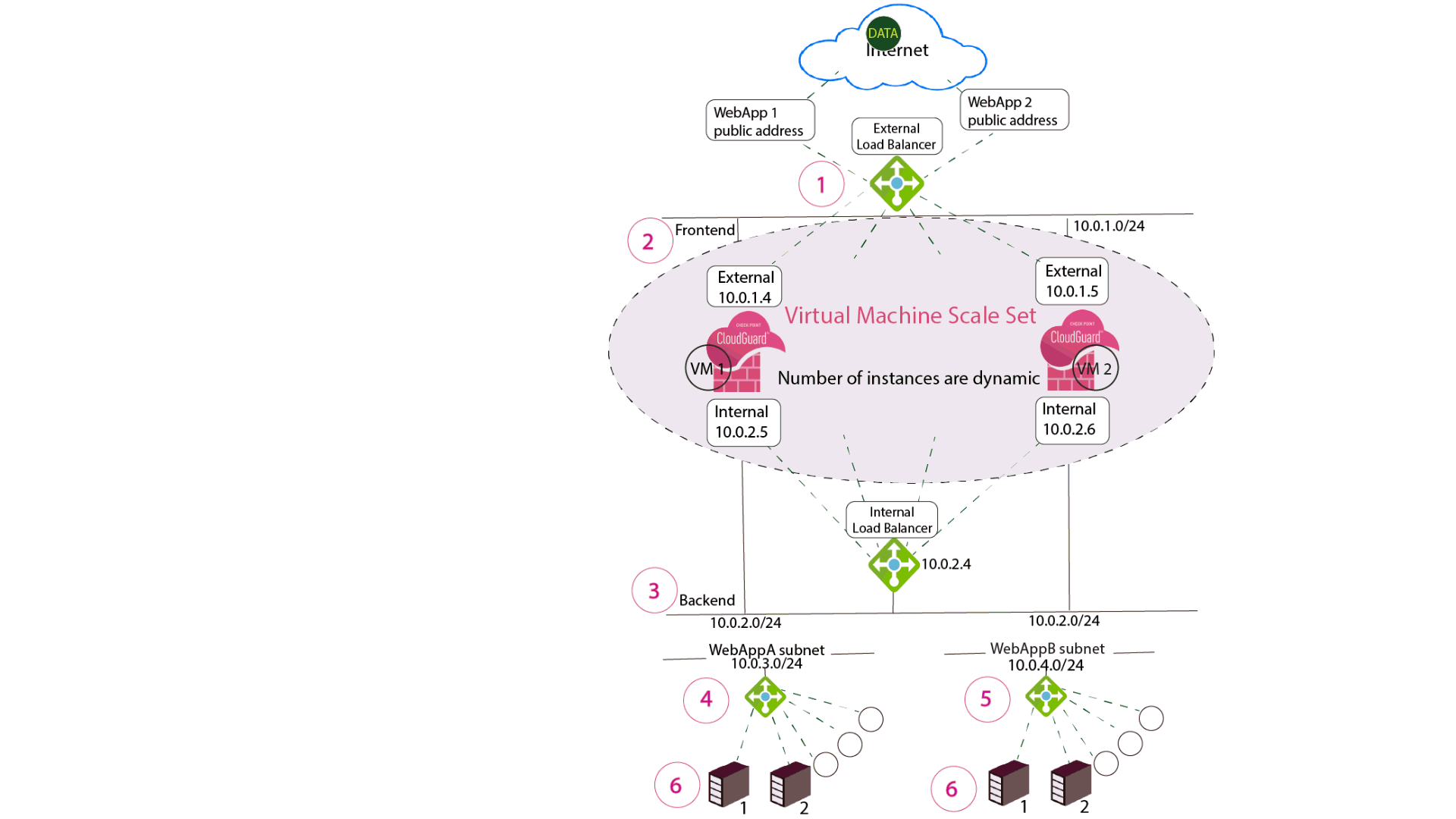
-
The request traffic arrives from the Internet at the External Load Balancer in the Check Point deployed solution.
-
The External Load Balancer forwards the request traffic to a VMSS Gateway instance.
-
The VMSS Gateway instance:
-
Inspects the request traffic.
-
Performs Static NAT on the request traffic.
-
Forwards the request traffic to the Application's Internal Load Balancer.
-
-
The Application's Internal Load Balancer forwards the request traffic to the Web Server Host.
Inbound Traffic Reply
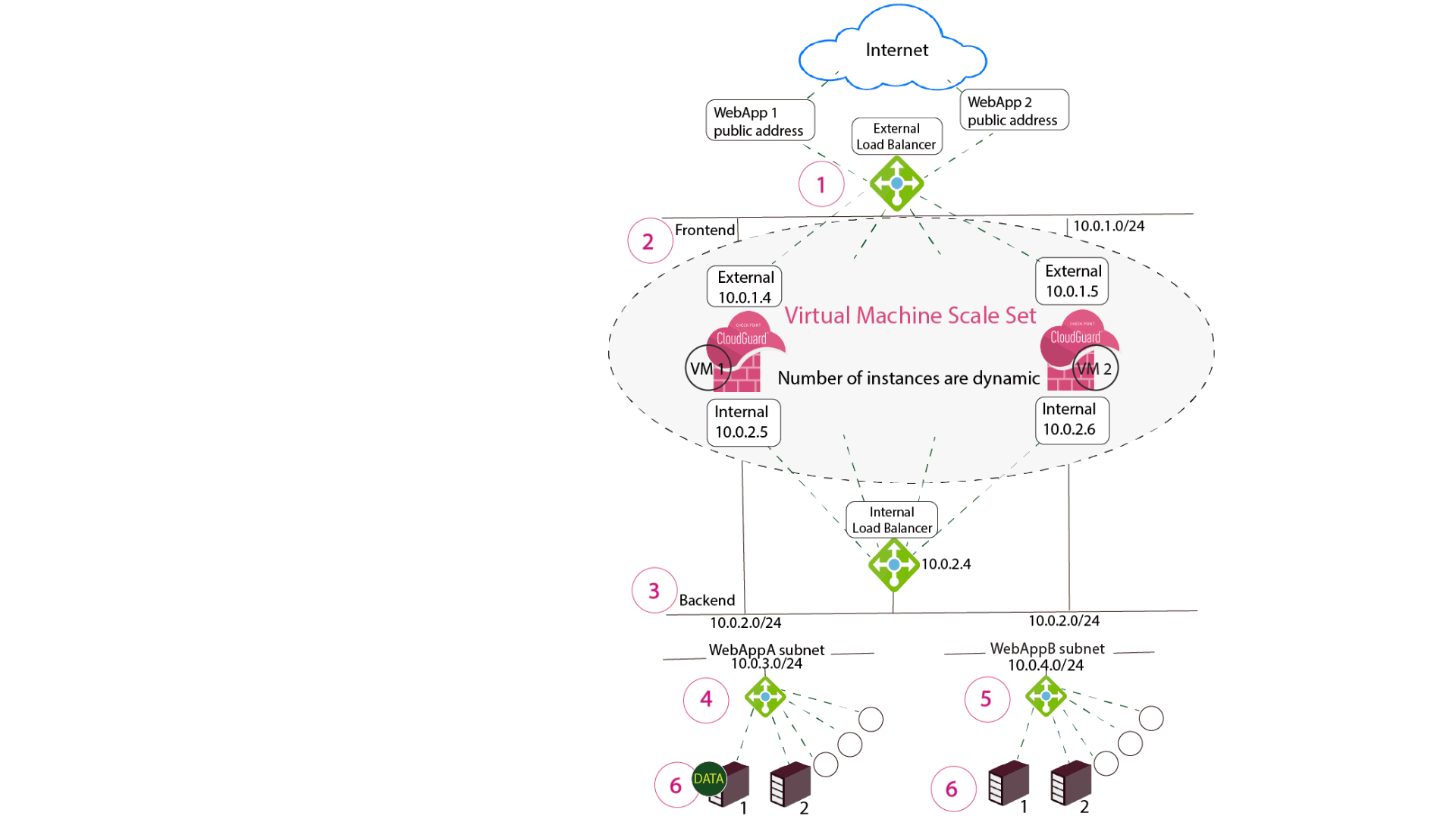
-
The reply traffic arrives from the Web Server Host to the original VMSS Gateway instance.
-
The VMSS Gateway instance:
-
Inspects the reply traffic.
-
Forwards the reply traffic to the destination on the Internet.
-
Outbound Traffic
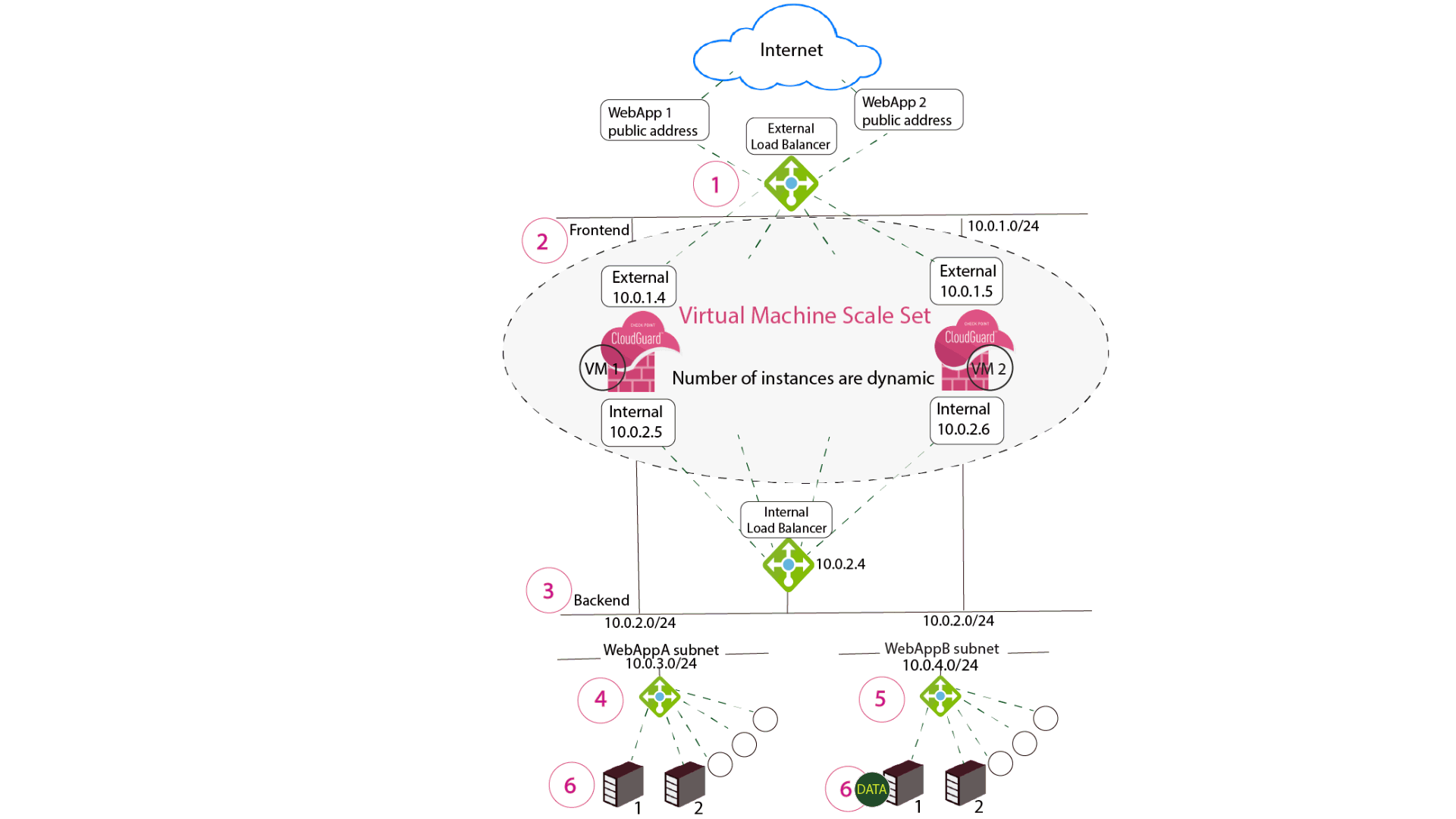
-
The request traffic arrives from the Web Server Host at the Internal Load Balancer in the Check Point deployed solution.
- The Internal Load Balancer forwards the request traffic to a VMSS Gateway instance.
-
The VMSS Gateway instance:
-
Inspects the request traffic.
-
Performs Hide NAT on the request traffic.
-
Forwards the request traffic to the Internet.
-
Outbound Traffic Reply
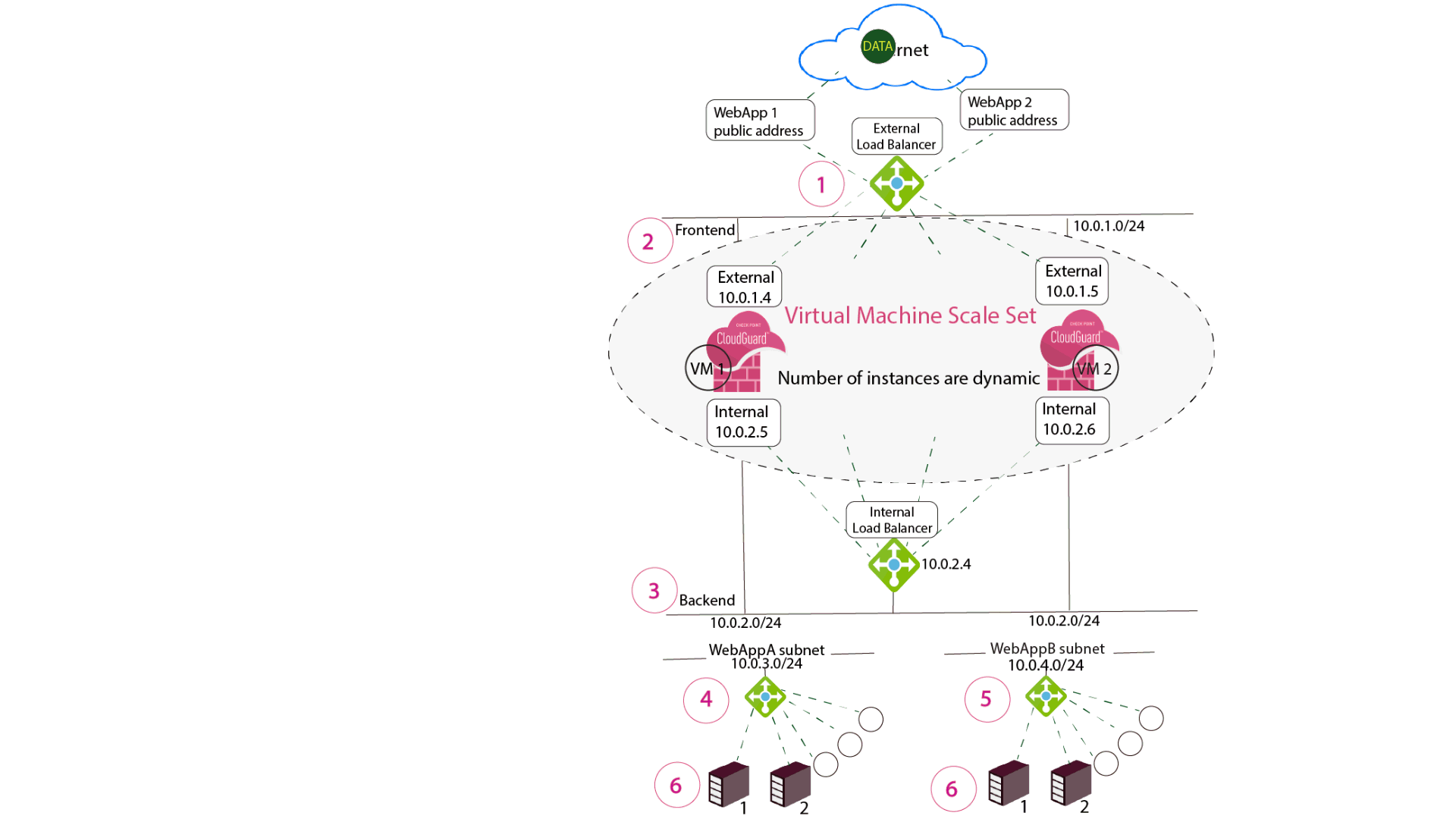
-
The reply traffic arrives from the Internet at the original VMSS Gateway instance.
-
The Check Point Security Gateway
 Dedicated Check Point server that runs Check Point software to inspect traffic and enforce Security Policies for connected network resources. instance:
Dedicated Check Point server that runs Check Point software to inspect traffic and enforce Security Policies for connected network resources. instance:-
Inspects the reply traffic.
-
Forwards the reply traffic to the Internal Web Server Host.
-
East-West Outbound Traffic
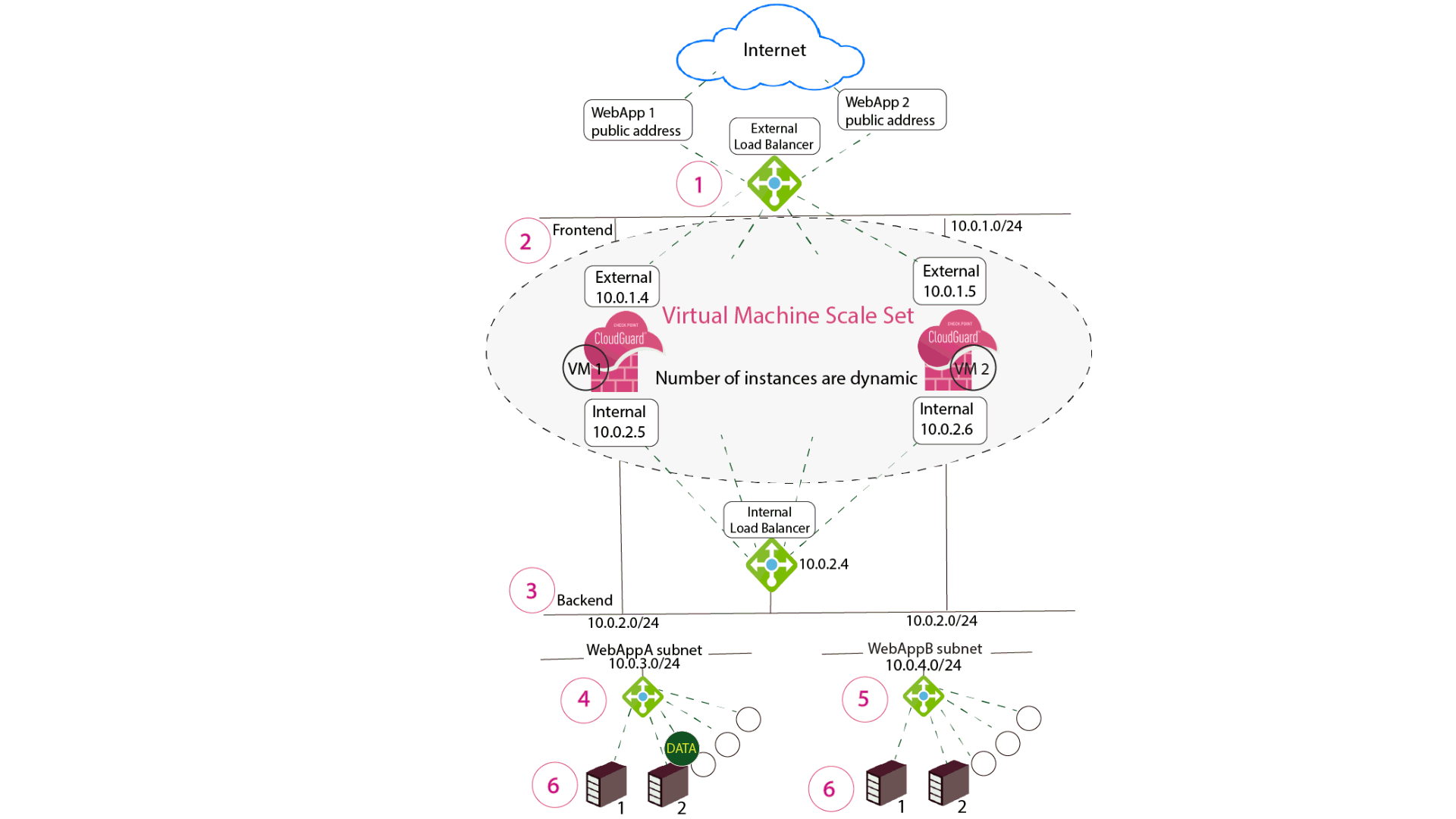
-
The request traffic arrives from the Web Server Host 1 at the Internal Load Balancer in the Check Point deployed solution.
-
The Internal Load Balancer forwards the request traffic to a VMSS Gateway instance.
-
The VMSS Gateway instance:
-
Inspects the request traffic.
-
Forwards the request traffic to the corresponding Internal Load Balancer of the Web Server Host 2.
-
-
The Internal Load Balancer of the Web Server Host 2 forwards the request traffic to the destination Web Server Host 2.
East-West Outbound Traffic Reply
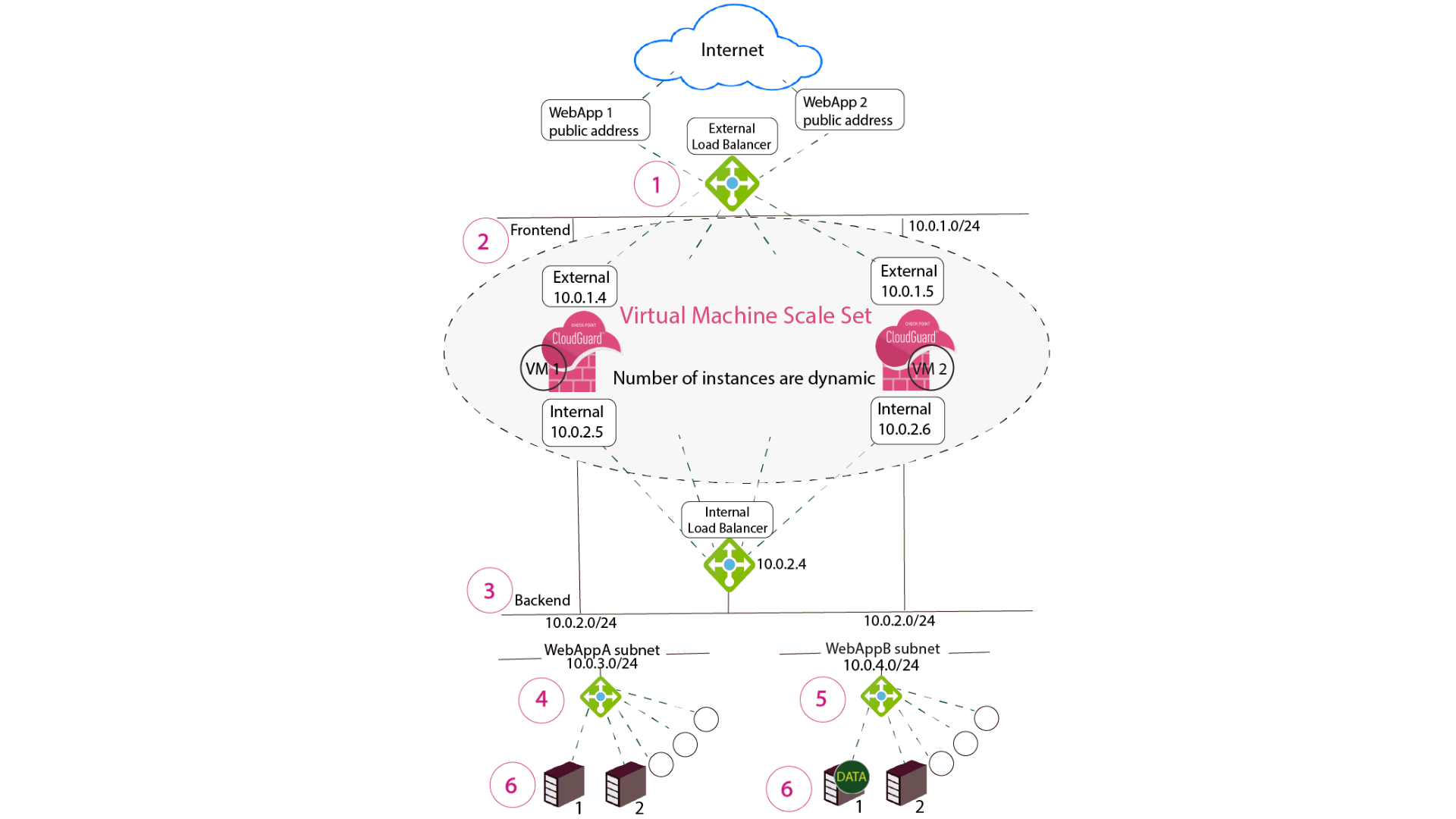
-
The reply traffic arrives from the Web Server Host 2 at the Internal Load Balancer in the Check Point deployed solution.
-
The Internal Load Balancer forwards the reply traffic to the same VMSS Gateway instance that processed the request traffic from the Web Server Host 1 to the Web Server Host 2.
-
The Check Point Security Gateway instance:
-
Inspects the reply traffic.
-
Forwards the reply traffic to the Web Server Host 1.
-
Intra-Subnet Traffic
Traffic travels freely in the subnet without inspection.
